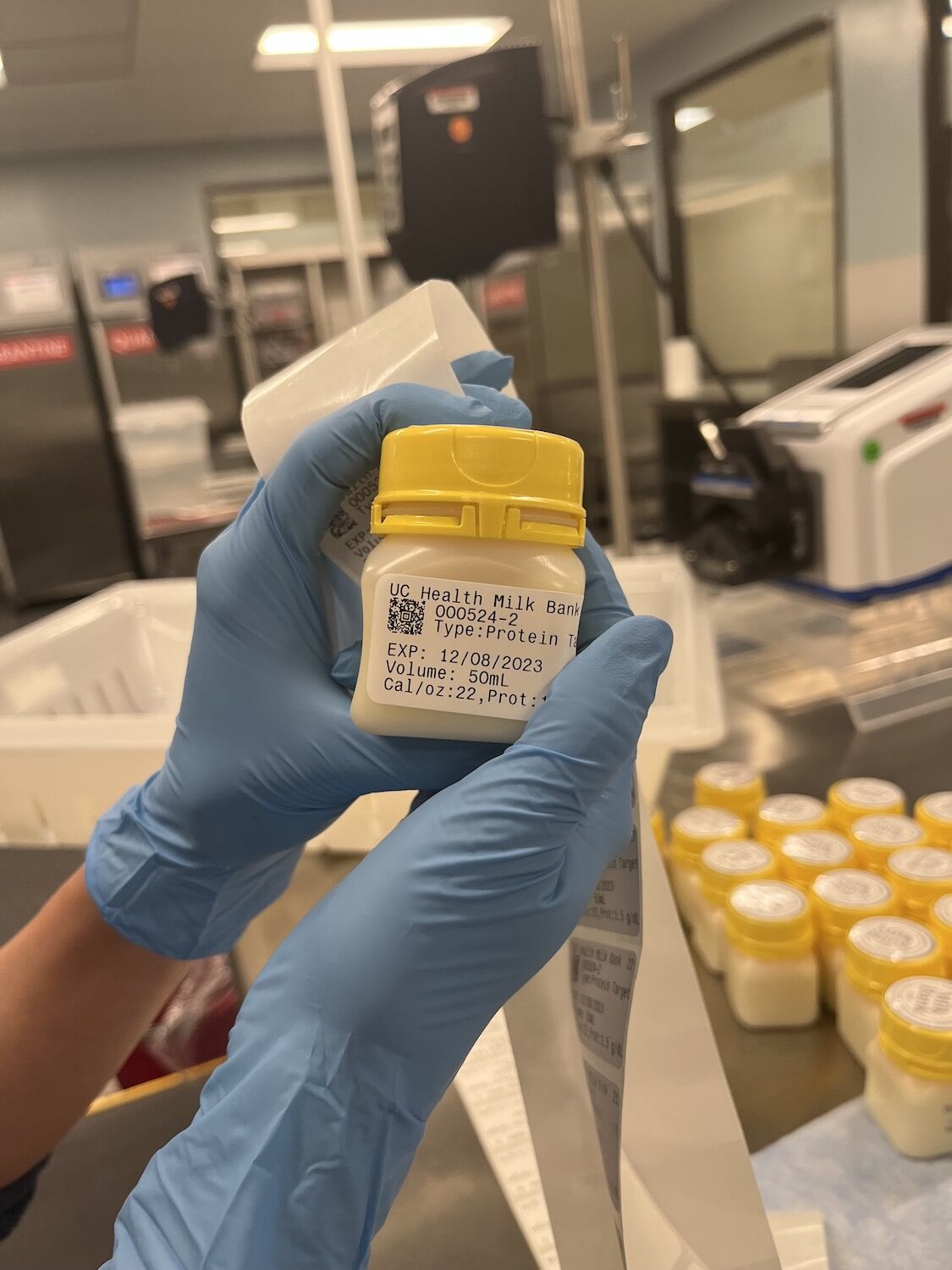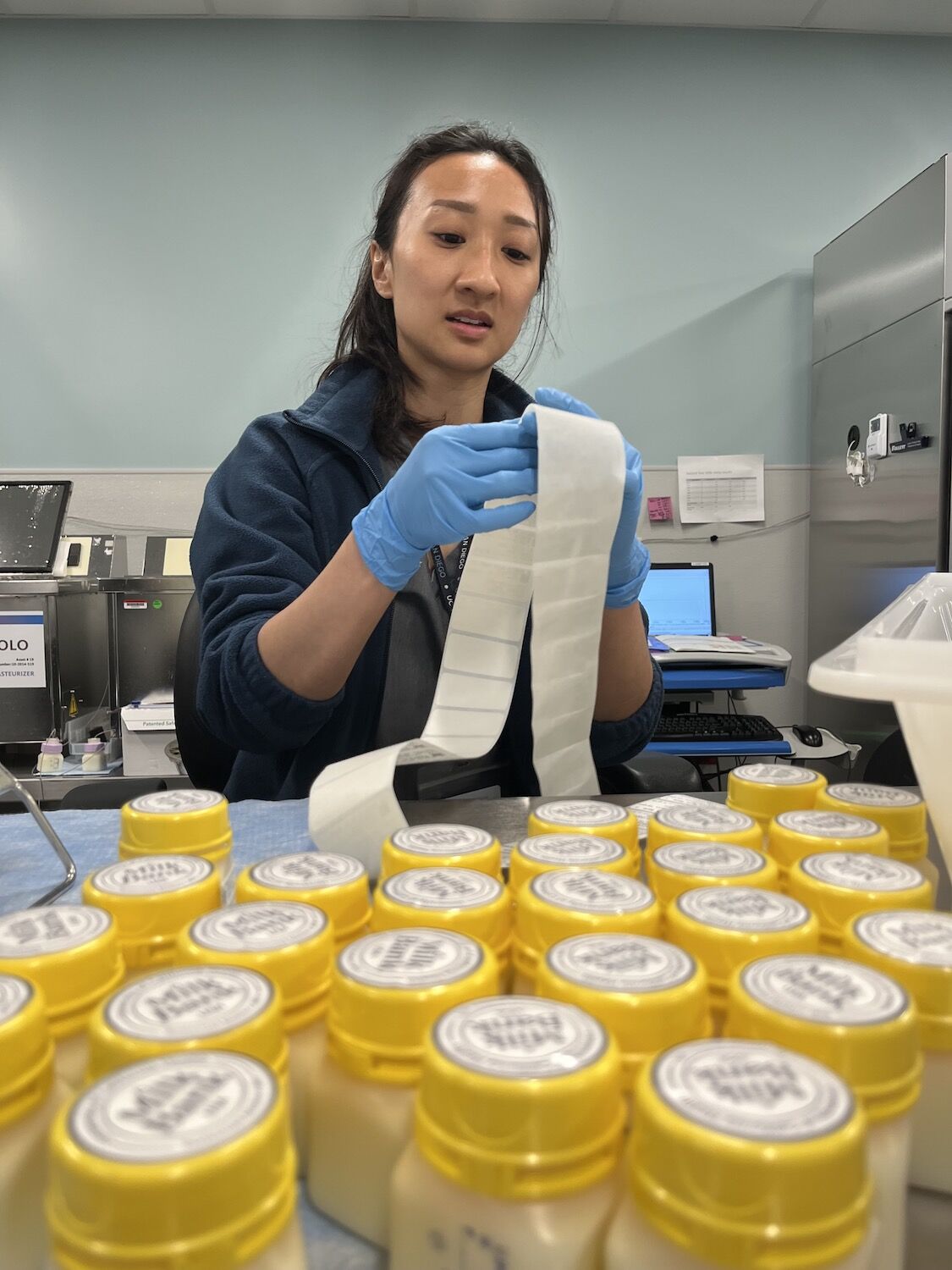
Milk bank Technician NICU milk Human Breastfeeding Study UCSD
A few years ago, when my firstborn was seven months old, I developed an incredibly itchy rash on the back of my legs. Soon, red blisters extended over the back side of my body, covering me neck-to-toe.
It wasn’t easy to get my condition diagnosed. In fact, I still don’t know for sure what ails me. Physicians and dermatologists I consulted all shrugged with a look of pity in their eyes, offering a shot of corticosteroids with some antihistamines.
Until I told them I was breastfeeding.
Then they walked back their recommendations, changed medications, and advised me to take lower doses. With just a topical steroid and an over-the-counter dose of Benadryl, my rash took months to clear.
I wasn’t alone in this confusing medical purgatory. According to a 2017 study, more than 70 percent of women who breastfeed or pump their milk take some form of medication during lactation. Yet, a lack of research on the effects, dosing, and safety of medications remains a real issue for those who breastfeed—and for their babies.“
The majority of [medications] are not tested in the maternal-infant space,” says Lars Bode, director of the Human Milk Institute (HMI), a UC San Diego–based institution recently created to fill that gap. “That puts us in this dilemma. We have hardly any information about many [medications] out there that we know moms take.”
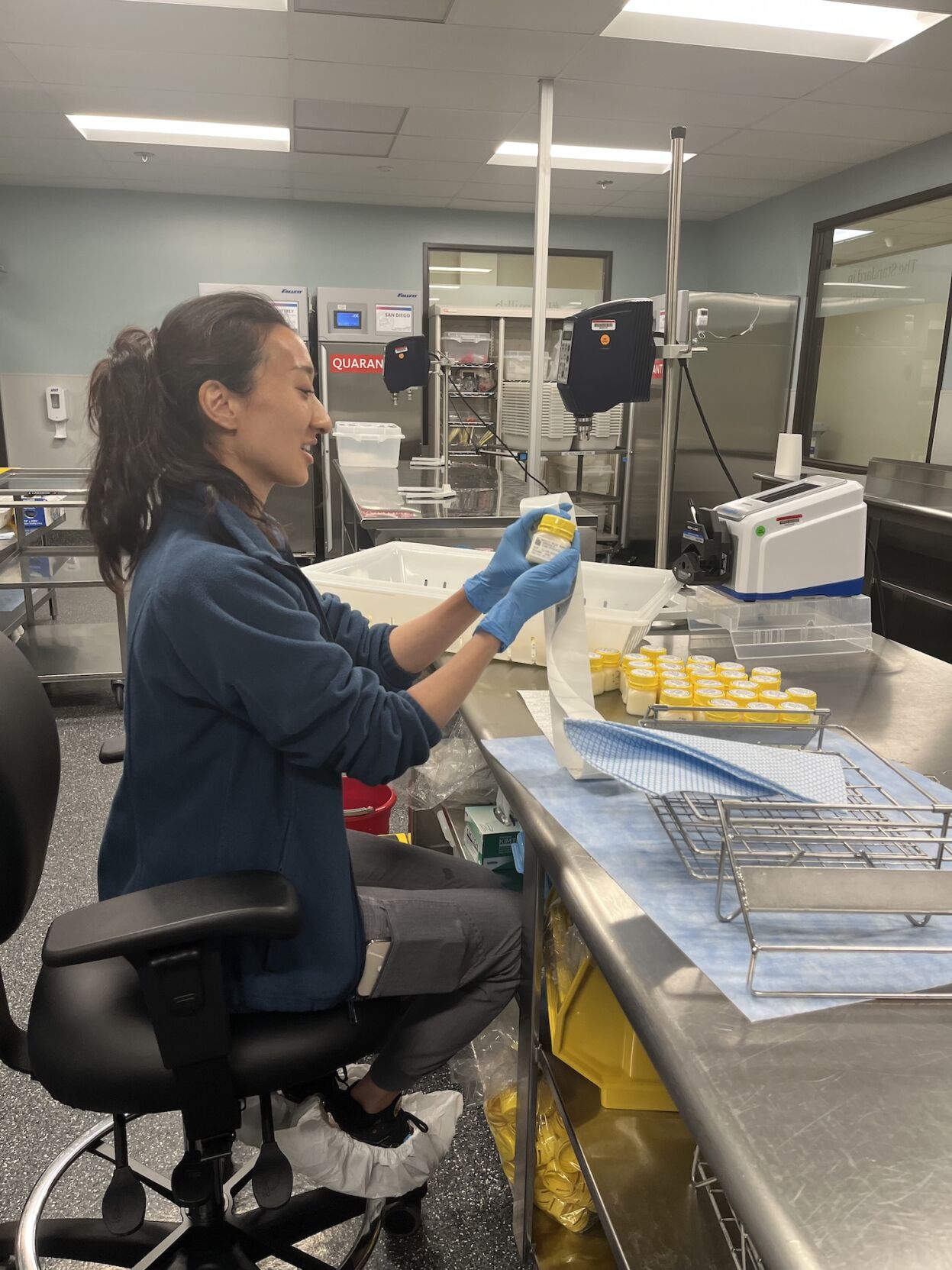
Human Milk Institute technician
Photo Credit: María José Durán
As a tandem-breastfeeding mother of two, both under four years old, I wanted to find out why it’s so hard to identify what medication is okay to use while lactating.
Studies have proven that breastfeeding is good for babies and good for moms (although not the only option to raise a healthy baby). But so far, the biological composition of breast milk and its extensive benefits have been widely understudied.
HMI gathers a wide array of pre-existing institutions within the UC San Diego campus to combine their individual efforts to expand our understanding of human milk. One of them, Mommy’s Milk Human Milk Research Biorepository, is the first-ever research database of human breast milk. Another, the Center for Community Health, seeks to improve lactation accommodation and equity. The University of California Health Milk Bank is one of only 31 nonprofit milk banks in North America, and the Larsson-Rosenquist Foundation Mother-Milk-Infant Center of Researcher Excellence focuses on better understanding the components of human milk. The Lactation and Perinatal Education Program at UC San Diego Extended Studies offers clinical lactation education to professionals.“
This is something we need to tackle from all kinds of different angles and disciplines,” Bode adds.
He believes that San Diego is setting a global example in the field of breastfeeding. “We have a community that’s very passionate [about lactation research] and the clinicians, researchers, and educators that, for years, have done this [work] in their own way,” he says.
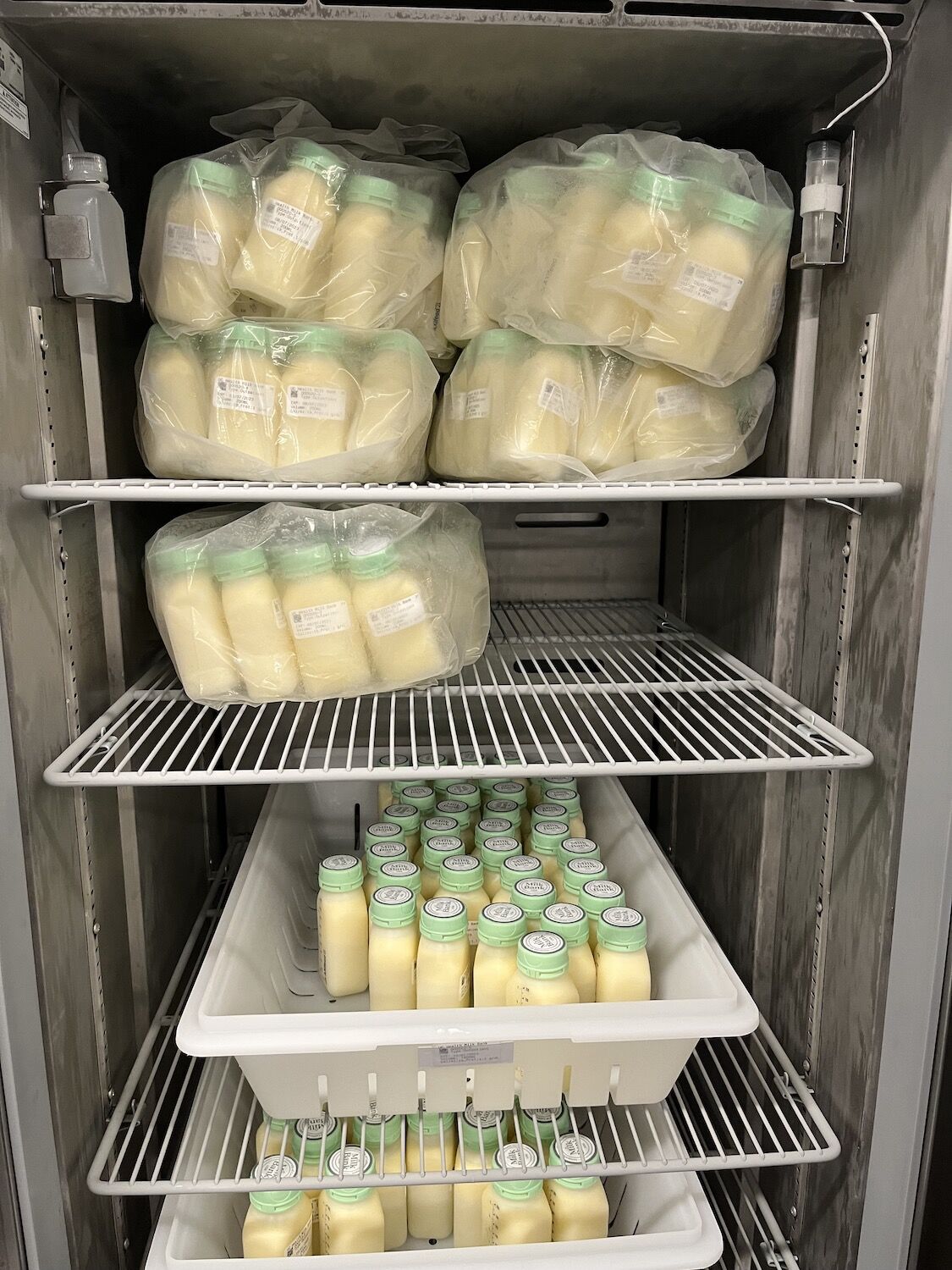
UC Health Milk Bank Human Breastfeeding Study UCSD
Photo Credit: María José Durán
Milk and Medicine
In 2018, the Federal Task Force on Research Specific to Pregnant Women and Lactating Women recommended the then-secretary of the Department of Health and Human Services identify and address these gaps in knowledge.“
To date, exclusion [of pregnant and breastfeeding people from research] may be motivated by concern about the possible harms of medication use during pregnancy or lactation,” reads the task force’s report. Their last meeting was in 2020. After this effort died down, a bill was introduced to Congress in 2022 to try to revitalize it, but it’s had little success so far.
That’s where Mommy’s Milk Human Milk Research Biorepository—part of HMI’s research arm —comes in. This lab collects milk samples from lactating people who are already taking medication in hopes they will amass enough samples to be able to produce a study.“We were established 10 years ago with the idea that we needed [more research on the effects of medicine on pregnant and lactating people], and it’s not that difficult to get it,” Mommy’s Milk director Christina Chambers says. “It’s just [about having] the will and the resources to do it.”
Donating Toward the Cause
In an effort to understand this issue and help be a part of its solution, I decided to donate my own breast milk. In May of this year, I arrived at the Mommy’s Milk offices in San Diego’s Birdland neighborhood next to Mary Birch Hospital (where my first daughter was born).
Kerri Bertrand, the research manager at the UCSD Department of Pediatrics, showed me around their space. Construction was underway in their lab at the time, and their temporary equipment consisted of two huge floor-to-ceiling freezers, a small fridge to keep samples cold, and a makeshift station where a lab technician transferred breast milk to pipettes.
After the tour, Bertrand took me to a small room to pump my own milk. “You are agreeing to participate in a breast milk biorepository. We’re going to request a breastmilk sample to be stored for research purposes,” Bertrand told me as she handed me a hospital-grade milk pump. She asked me questions about my pregnancies, lactation, drug use, exposures, and my children.
While the breast pump gently tugged on my nipples, extracting the milk, I took notes and considered how I might help thousands of people with this simple, everyday act.Just like me, more than 3,000 people have already signed up to participate in this effort. “The interest in doing this is overwhelming,” Chambers says. “It’s just incredible.”
What We Know Now
Although there have been few large research studies on this subject, San Diego–based, international board–certified lactation consultant Rachelle Markham explains that there exists some information to help parents make informed decisions about breastfeeding and medication.
In fact, in 2013, a study by the American Academy of Pediatrics declared that most psychotropic therapies, narcotics, immunizations, drugs to treat substance abuse, and foods to boost breast milk production are safe to take or consume while breastfeeding. “Many mothers are inappropriately advised to discontinue breastfeeding or avoid taking essential medications,” the study reads.
HMI also contributes to spreading the available information through LactMed, a free online database. “LactMed [is] a trusted resource about medications and breastfeeding, and it’s widely used,” Chambers explains—but not all parents, or even all doctors, know about it.“
The little bit of data that we have, clinicians often don’t know it exists,” Bode adds.
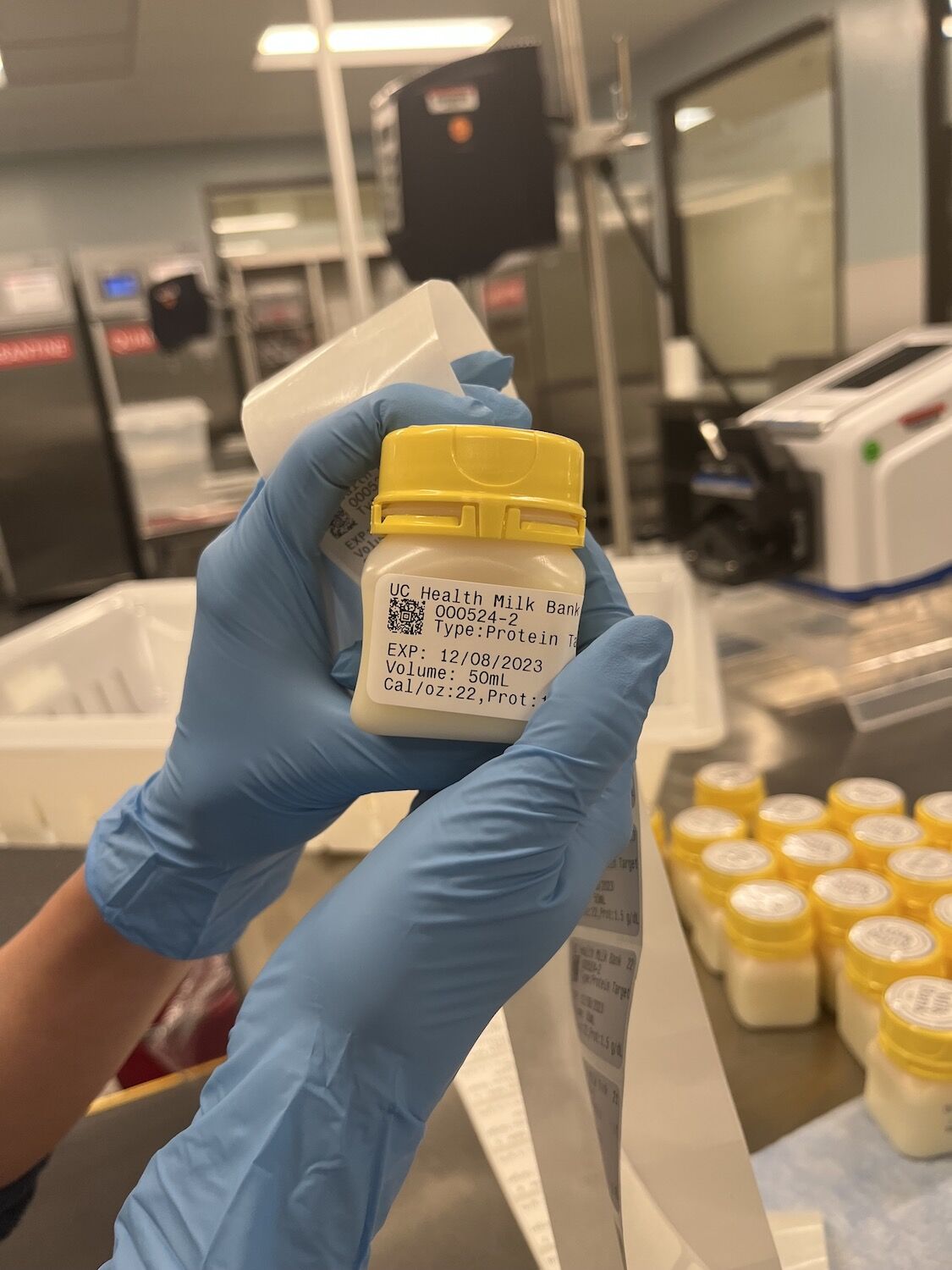
Human Breastfeeding Study UCSD High Protein Milk NICU babies
While researching this story, I looked up the safety of corticosteroids and antihistamines, the medications that should have been prescribed to me for my hives. I was dumbfounded when I read that, according to the HMI’s LactMed database, they are both safe.
Prednisone, a commonly used corticosteroid, appears in low amounts in breast milk. Similarly, all antihistamines are considered safe to use during breastfeeding, as minimal amounts are excreted in human milk.
The amount of itching and pain that I could have avoided had my doctors been more informed about what medications are safe while breastfeeding is something that keeps me up at night.
Other parents have faced similar situations. “Yesterday I fielded four calls from people who were told that they had to stop breastfeeding or pump-and-dump over medications that were completely safe,” Markham says. “But that’s what their doctors had told them.”
There’s still a lot left to learn.
Chambers says that, even today, it’s rare for the FDA to require that pharmaceutical companies conduct lactation-related studies before a new drug hits the market. In fact, 90 percent of clinically approved medications do not have appropriate drug labeling information for those who are pregnant and lactating.
Over my three-and-a-half years of breastfeeding, I’ve examined many a pill label, wondering at the med’s safety. Recently, a quick search in my medicine cabinet revealed a generic bottle of ibuprofen with a warning on it: “If pregnant or breastfeeding, ask a health professional before use.” According to the HMI’s LactMed database, however, the medication is “a preferred choice as an analgesic or anti-inflammatory agent in nursing mothers.
”Confusion about what pill to take is not the only consequence of the lack of research and information about taking medication while lactating.“
Research has shown that people with highest rates of postpartum depression are those who wanted to breastfeed but were unsuccessful,” Markham says, explaining that many feel sad or disappointed that their plans were derailed for reasons out of their control. “[Breastfeeding] is a big relationship to have to change for medication.”
Mommy’s Milk repository also receives milk samples to conduct this vital research from the UC Health Milk Bank, the clinical arm of HMI. Director Lisa Stellwagen explains that sometimes their donor milk cannot be used to feed babies, and then the milk is transferred to the research biorepository.
“People want their milk to go to good use, so we can learn more about human milk,” Stellwagen said as we toured the state-of-the-art facilities located inside the San Diego Blood Bank facilities on Gateway Center Ave.UC Health Milk Bank collects donor samples and distributes them to NICUs, a life-saving measure to premature, low-birth-weight babies who could develop sepsis. “There’s more than 600 elements in human milk, there’s so much more to know, and we have to work together to find out,” Stellwagen said.“
Why hasn’t there been an effort to understand human milk beyond nutrition and maternal health?” Bode continues. “It’s still mind-boggling.”
His own research dives into oligosaccharides found almost exclusively in human breast milk. “We found that some of these sugars reduce inflammation in a way that could be therapeutic for people with arthritis or who have had a heart attack.”
PARTNER CONTENT
For Bode, human milk has been underestimated. “We’ve been told that formula is just as good, the perfect alternative [that] has been pushed for the last few decades, and there’s a lot more marketing force and financial resources to push the alternative.
”The HMI is currently looking for community partners and sponsors. “We want to make sure that the work we do here is not only grounded in the community, but also that we work with the community and solve problems together, first here in San Diego but really globally.”












